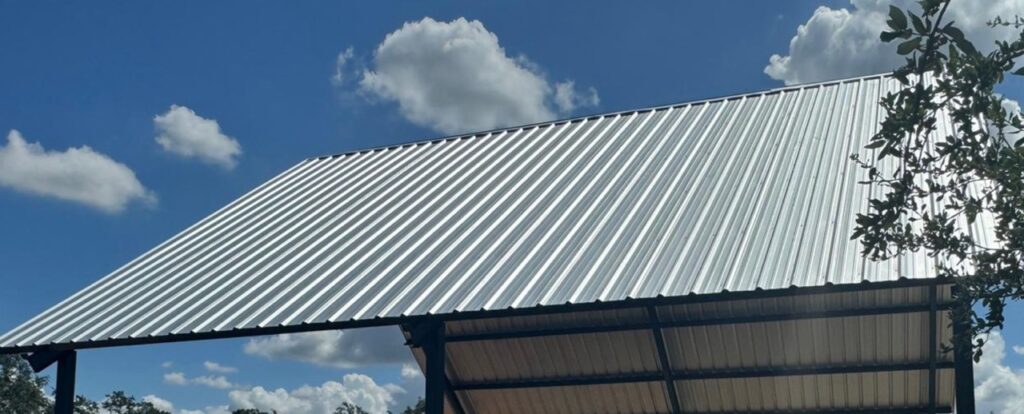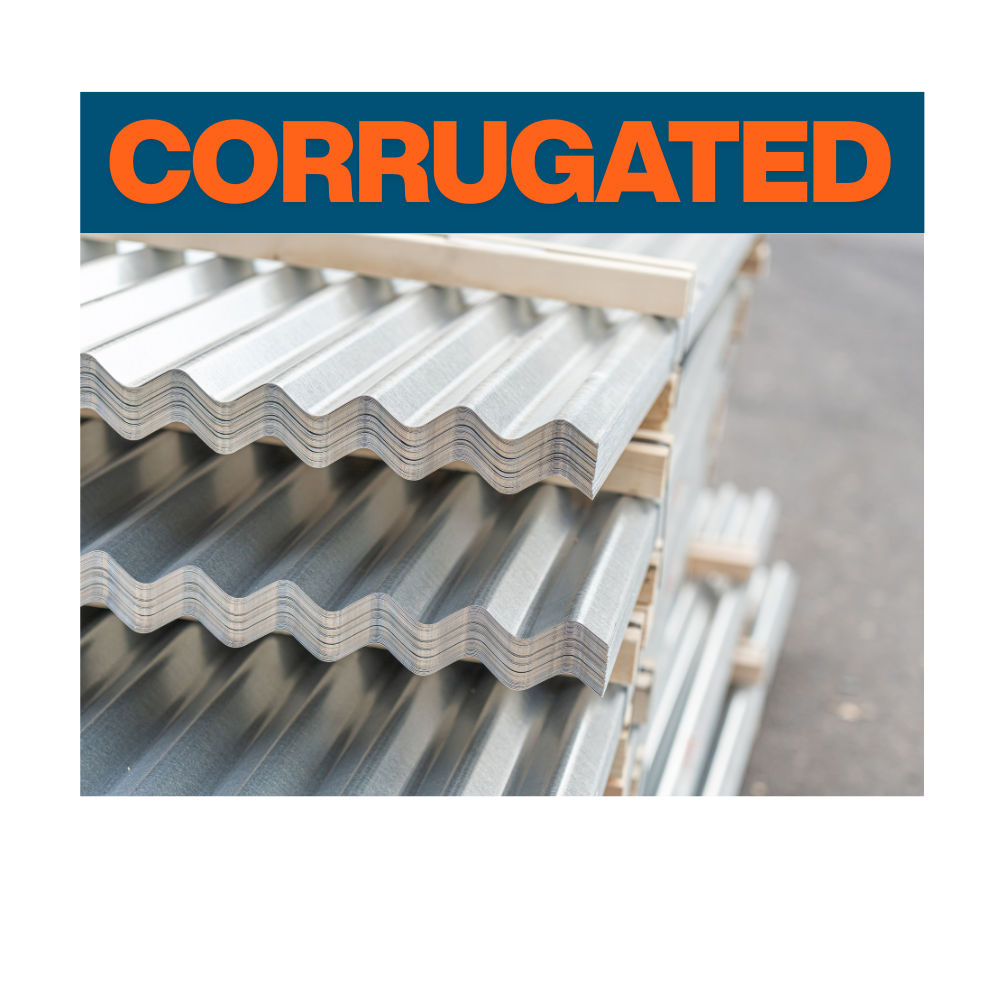When it comes to protecting your home from the elements, the roofing material you choose makes all the difference. In recent years, metal roofing has surged in popularity, with snap lock systems leading the charge in residential applications. What was once primarily seen on commercial buildings has now become a sought-after solution for homeowners looking to combine durability, energy efficiency, and modern aesthetics.
The evolution of metal roofing technology has transformed these systems from purely functional to remarkably versatile design elements that enhance a home’s value while providing superior protection. As we navigate changing climate patterns and increasing energy costs, it’s no wonder that savvy homeowners are turning to metal roofing snap lock systems as their preferred roofing solution. Let’s explore why these innovative systems are capturing the attention of homeowners across the country and how they might be the perfect match for your next roofing project.
Table of Contents
What Are Metal Roofing Snap Lock Systems?
Understanding the Basics
Metal roofing snap lock systems represent one of the most innovative advancements in residential roofing technology. At their core, these systems consist of metal panels with specially designed edges that “snap” together during installation, creating secure, weather-tight seams without requiring mechanical seaming tools. Unlike traditional exposed fastener systems, snap lock profiles hide the fasteners beneath the metal panels, providing a cleaner appearance and eliminating potential leak points.
Components and Materials of Metal Roofing Snap Lock
The typical snap lock system includes several key components working together to create a robust roofing solution. The panels themselves are commonly made from materials like:
- Galvanized or Galvalume steel
- Aluminum
- Copper
- Zinc
Each material offers different benefits in terms of weight, cost, and longevity. The panels feature raised seams with male and female edges designed to interlock securely. Beneath these panels, you’ll find underlayment materials, moisture barriers, and in many cases, insulation to enhance energy performance.
Think of snap lock systems as similar to high-quality luggage with interlocking zippers – they create a secure, tight seal that keeps the elements out while maintaining structural integrity. This ingenious design allows for thermal movement without compromising the roof’s protective capabilities, something particularly valuable in areas with significant temperature fluctuations.
The Evolution of Metal Roofing snap lock Technology
Historical Perspective
Metal roofing isn’t new – it dates back centuries, with early examples appearing on prestigious buildings throughout Europe. However, the journey from simple metal sheets to today’s sophisticated snap lock systems represents an impressive evolution in building technology. Early metal roofs were often noisy, prone to leakage, and limited in design options. They served primarily functional purposes on barns, warehouses, and industrial buildings.
Technological Breakthroughs
The development of snap lock technology marked a turning point in metal roofing’s residential viability. Key advancements included:
- Improved manufacturing precision: Computer-controlled production allows for exact measurements and consistent quality.
- Better coating technologies: Modern finishes resist fading, chalking, and corrosion far better than earlier generations.
- Advanced sealants and underlayments: These components dramatically improved water resistance and reduced noise issues.
- Innovative clip systems: These allow for thermal expansion and contraction without stressing fastening points.
Today’s metal roofing snap lock systems bear little resemblance to their industrial ancestors. They’ve evolved into sophisticated building systems that address virtually all the shortcomings of early metal roofing while adding benefits unimaginable in previous generations.
Durability and Longevity: The Primary Appeal
Exceptional Lifespan
Perhaps the most compelling reason homeowners choose metal roofing snap lock systems is their remarkable longevity. While traditional asphalt shingles typically last 15-20 years, metal roofing systems routinely perform for 40-70 years, depending on the specific material and environmental conditions. This extraordinary lifespan means many homeowners will never need to replace their roof again.
Resistance to Common Roofing Problems
Metal roofing snap lock systems excel at avoiding the problems that plague other roofing materials:
- Rot and insect damage: Unlike wood, metal is impervious to rot and insects.
- Cracking and curling: Metal panels maintain their shape and integrity over decades.
- UV degradation: High-quality finishes resist ultraviolet breakdown far better than asphalt.
- Impact resistance: Many metal roofing systems carry Class 4 impact ratings, the highest available.
When properly installed, metal roofing creates what I like to call a “forever umbrella” for your home – a protective shield that maintains its effectiveness decade after decade with minimal intervention, unlike traditional roofing that begins deteriorating almost immediately after installation.
Energy Efficiency and Environmental Benefits of Metal Roofing SnapLock
Thermal Performance
One of the less obvious but equally important benefits of metal roofing snap lock systems is their exceptional energy efficiency. These systems can:
- Reflect solar radiation rather than absorbing it (especially with light-colored or specially coated surfaces)
- Reduce attic temperatures by up to 25 degrees
- Decrease cooling costs by 10-25% in summer months
The secret lies in the roof’s design and installation. The snap lock system creates an ideal platform for integrating insulation and ventilation components, allowing for an energy-efficient building envelope that works year-round.
Eco-Friendly Attributes
For environmentally conscious homeowners, metal roofing snap lock systems offer compelling advantages:
- Recyclability: Most metal roofing is 100% recyclable at the end of its useful life, and many products already contain recycled content.
- Reduced landfill impact: The longevity of metal roofing means significantly less roofing waste over time.
- Energy production compatibility: Metal roofs provide excellent platforms for solar panel installation.
- Rainwater harvesting potential: Metal is an ideal surface for clean rainwater collection systems.
By choosing metal, you’re essentially making a one-time resource investment that provides decades of service, rather than repeatedly consuming and disposing of shorter-lived materials. It’s roofing’s answer to the “buy it for life” philosophy.
Aesthetic Versatility: Beyond the Industrial Look of the Metal Roofing Snap Lock
Style Evolution
Perhaps the most dramatic change in metal roofing has been its aesthetic transformation. Far from the utilitarian corrugated panels of yesterday, today’s metal roofing snap lock systems are available in:
- Multiple profile designs (vertical seam, shake, tile, slate, and more)
- Dozens of color options with custom colors available
- Various finish types (matte, gloss, textured)
- Specialty finishes that mimic other materials
This versatility means metal roofing can complement virtually any architectural style, from ultra-modern to historically traditional.
Design Integration
Architects and designers have embraced metal roofing snap lock systems for their ability to:
- Create clean, contemporary lines
- Form complex roof geometries with precision
- Allow for creative expression through color and texture
- Integrate with other building materials harmoniously
The result is that metal roofing no longer announces itself as “metal” – instead, it serves the overall design vision of the home. In many upscale neighborhoods, you might not even realize you’re looking at metal roofing because it blends so seamlessly with the architectural concept.
Cost Analysis: Short-Term Investment vs. Long-Term Savings
Initial Investment Considerations When Choosing Metal Roofing Snap Lock
It’s no secret that metal roofing snap lock systems typically require a higher upfront investment than conventional roofing options. Homeowners can expect to pay roughly 2-3 times the cost of standard asphalt shingles for quality metal roofing. This initial price difference comes from:
- Superior raw materials
- More sophisticated manufacturing processes
- Greater installation expertise requirements
- Longer warranty coverage
However, focusing solely on the initial price tag misses the comprehensive financial picture.
The Long-Term Financial Equation
When analyzed over the life of the roof, metal roofing snap lock systems often prove more economical than less expensive alternatives through:
- Extended replacement cycles: Avoiding 2-3 complete roof replacements over the same timespan
- Reduced maintenance costs: Fewer repairs and maintenance requirements
- Insurance advantages: Many insurers offer premium discounts for impact-resistant metal roofing
- Energy savings: Lower cooling costs, especially in hot climates
- Home value increase: National average of 1-6% property value increase with metal roofing
Consider this approach to understanding the value: If you divide the total cost by the expected years of service, metal roofing often has a lower “cost per year” than seemingly cheaper alternatives. It’s similar to comparing the cost of quality footwear that lasts for years versus constantly replacing less expensive pairs – sometimes spending more upfront actually costs less over time.
Weather Resistance of Metal Roofing Snap Lock in Extreme Conditions
Performance in Severe Weather
For homeowners in areas prone to extreme weather, metal roofing snap lock systems provide exceptional protection against:
High Winds Modern metal roofing systems are engineered to withstand winds exceeding 140 mph – well beyond the capabilities of most conventional roofing. The interlocking nature of snap lock panels creates a unified surface that resists wind uplift, while concealed fasteners eliminate common failure points.
Hail and Impact Quality metal roofing carries Class 4 impact resistance ratings, the highest available. While no roofing is completely impervious to extreme hail, metal roofing snap lock systems frequently survive storms that destroy other roofing types.
Fire Resistance Metal roofing carries Class A fire ratings, offering superior protection against windblown embers and spreading fires – a critical consideration in wildfire-prone regions.
Heavy Snow and Ice The smooth surface of metal roofing sheds snow more effectively than textured materials, while the strength of the panels easily supports heavy snow loads. Additionally, many metal roofing systems can be equipped with snow retention systems to control snow shedding.
Regional Weather Considerations
Different climate challenges require different roofing approaches:
- In hurricane-prone coastal areas, metal roofing’s wind resistance makes it an increasingly popular choice.
- In regions with heavy snowfall, metal’s snow-shedding properties and structural strength provide significant advantages.
- In hot, sunny climates, reflective metal roofing dramatically reduces cooling costs and attic temperatures.
- In hail-prone regions, impact-resistant metal roofing often qualifies for insurance discounts while providing superior protection.
The versatility of metal roofing snap lock systems allows them to be optimized for specific regional weather challenges, making them an adaptable solution regardless of local climate conditions.
Installation Process and Considerations for Metal Roofing Snap Lock
Professional Installation Requirements
While DIY-friendly roofing options exist, metal roofing snap lock systems generally require professional installation due to:
- The precision needed for proper panel alignment
- Specialized tools and techniques
- System-specific details for flashings and transitions
- The importance of proper underlayment and moisture barriers
A properly installed metal roof is a thing of beauty and function, but installation errors can compromise both performance and appearance. The expertise of experienced installers becomes an essential part of the total system.
The Installation Process
Understanding what to expect during installation helps homeowners prepare for the project:
- Preparation and tear-off: Existing roofing may be removed, though in some cases, metal can be installed over existing shingles (check local building codes).
- Deck inspection and repair: The roof deck must be sound and smooth.
- Underlayment application: High-quality underlayment provides a secondary moisture barrier.
- Trim and flashing installation: These critical components manage water at edges and transitions.
- Panel installation: Panels are cut to length and snapped together in sequence.
- Detail work: Penetrations, ridges, and special features receive finishing touches.
- Final inspection: Ensuring all components are properly installed and sealed.
Most residential installations take 2-5 days depending on roof complexity and size, though larger or more intricate projects may require additional time.
Maintenance Requirements and Expectations
Minimal Maintenance Needs
One of the most appealing aspects of metal roofing snap lock systems is their minimal maintenance requirements. Unlike other roofing materials that demand regular attention, metal roofing typically needs only:
- Annual visual inspection
- Clearing of debris from valleys and gutters
- Occasional cleaning for aesthetic purposes
- Checking and maintaining sealants every 15-20 years
This reduced maintenance burden is especially valuable for multi-story homes or complex roof designs where access is challenging.
Longevity-Enhancing Practices
To maximize the already impressive lifespan of metal roofing, homeowners should:
- Prevent constant contact with incompatible materials (especially copper and aluminum)
- Address any tree limbs that may rub against the roof surface
- Clean accumulated debris that might trap moisture
- Inspect after extreme weather events
With these simple practices, metal roofing snap lock systems often exceed their already generous warranty periods, providing decades of worry-free protection.
Comparing Snap Lock to Other Roofing Systems
Not all metal roofing is created equal. Snap lock systems offer specific advantages over other metal roofing types:
- Compared to exposed fastener systems: Snap lock systems eliminate exposed screws that can back out or leak over time.
- Compared to standing seam with mechanical seaming: Snap lock installation is faster and doesn’t require special seaming tools.
- Compared to metal shingles: Snap lock panels typically offer better water-shedding capability and fewer seams.
The best system depends on specific project requirements, but snap lock’s balance of performance, aesthetics, and value has driven its growing popularity in the residential market.
Real Estate Value and ROI Considerations
Impact on Property Valuation
Metal roofing snap lock systems positively influence home value through several mechanisms:
- Curb appeal enhancement: Contemporary designs add visual distinction
- Reduced future liability: Buyers recognize the value of a roof that won’t need replacement soon
- Energy efficiency premium: Lower operating costs increase property desirability
- Insurance advantages: Potential premium savings transfer to new owners
Recent studies suggest homes with metal roofing command a price premium between 1-6% compared to similar homes with standard roofing, with the percentage varying by region and property type.
Return on Investment Calculation
While ROI varies based on location, property type, and specific materials, metal roofing typically offers:
- 60-85% cost recoupment at sale within the first few years after installation
- 85-95+% cost recoupment when considering the energy savings over 5-10 years
- Over 100% ROI when factoring in avoided replacement costs over the roof’s lifespan
For homeowners planning to remain in their homes long-term, the investment becomes even more attractive as the cumulative benefits of energy savings and avoided replacements compound over time.
Case Studies: Homeowner Experiences
Suburban Transformation: The Williams Family
The Williams family in suburban Atlanta replaced their 15-year-old asphalt roof after repeated hail damage. Their metal roofing snap lock system has weathered three subsequent hail events without damage, and they report summer cooling costs decreased by approximately 23% after installation. “The insurance discount alone covers part of the additional cost,” notes homeowner Michael Williams. “And knowing we’ll likely never deal with another roof replacement? That’s priceless.”
Historic Home Adaptation: Victorian Restoration
Sarah Lancaster’s 120-year-old Victorian home in New England presented unique challenges. “We wanted something that would honor the home’s character while providing modern performance,” she explains. A custom-colored metal roof with a traditional profile provided the perfect solution. “In winter, we no longer deal with ice dams, and the snow slides off instead of creating dangerous loads on our aging structure.”
Energy-Focused Installation: Desert Performance
In Arizona, the Martinez family’s metal roof with specialized reflective coating has dramatically changed their home’s comfort. “Before, our air conditioning ran constantly from May through September,” reports homeowner Daniel Martinez. “Now, it cycles normally, and our upstairs rooms are no longer unbearably hot by afternoon.” Their utility bills decreased by an average of $175 monthly during summer months following installation.
Future Trends in Metal Roofing Technology
Emerging Innovations
The metal roofing industry continues to evolve with exciting developments on the horizon:
- Advanced coating technologies: New finishes offering enhanced reflectivity, self-cleaning properties, and improved durability
- Integrated energy systems: Metal roofing designed specifically for seamless solar integration
- Smart roof technology: Embedded sensors monitoring roof performance and weather conditions
- Enhanced insulation integration: Systems designed to maximize energy performance through better thermal barriers
- Sustainable manufacturing: Reduced carbon footprint production using renewable energy and recycled materials
These innovations promise to extend metal roofing’s advantages even further in coming years.
Market Trajectory
Industry analysts project continued growth in residential metal roofing, with snap lock systems gaining market share specifically because they balance performance, aesthetics, and value. The market is shifting from early adopters to mainstream acceptance, with growth rates exceeding 15% annually in many regions. As extreme weather events increase in frequency and energy costs rise, metal roofing’s protective and efficiency benefits become even more compelling for average homeowners.
Conclusion: Is a Metal Roofing Snap Lock System Right for You?
Making the decision to invest in a metal roofing snap lock system ultimately depends on your specific circumstances and priorities. The ideal candidates are homeowners who:
- Plan to remain in their homes for at least 5-10 years
- Value long-term performance over minimum initial cost
- Live in areas with extreme weather considerations
- Are concerned about energy efficiency and environmental impact
- Appreciate contemporary aesthetic options
While the higher initial investment doesn’t make sense for every situation, the combination of longevity, performance, and reduced life-cycle costs makes metal roofing snap lock systems an increasingly smart choice for discerning homeowners. As manufacturing techniques improve and installation expertise becomes more widespread, these systems will likely continue their transition from premium alternative to new standard in quality residential roofing.
When evaluating your roofing options, consider not just what serves your needs today, but what will continue serving them decades from now. In that light, metal roofing snap lock systems often emerge as the clear winner in overall value, performance, and peace of mind.
FAQs
1. How noisy are metal roofing snap lock systems during rain or hail?
Contrary to popular misconception, properly installed metal roofing with modern underlayment is no noisier than other roofing types. The solid decking, underlayment, and attic insulation create multiple sound barriers. Some homeowners actually report disappointment that their metal roof isn’t more audible during rainfall! If you specifically want to hear rain on your roof, reduced underlayment in certain areas can achieve this effect.
2. Can metal roofing be installed over my existing shingles?
In many jurisdictions, metal roofing can be installed over a single layer of existing shingles, eliminating tear-off costs and landfill waste. However, this depends on local building codes, the condition of existing roofing, and the specific metal system chosen. A professional assessment is necessary to determine if overlay installation is appropriate for your situation.
3. Will metal roofing make my home more susceptible to lightning strikes?
No, metal roofing does not attract lightning. Lightning seeks the path of least resistance to ground, usually the tallest object in an area, regardless of material. In the rare event lightning does strike your home, metal roofing actually provides additional safety by distributing the energy throughout the structure rather than concentrating it in one area, reducing fire risk.
4. How does metal roofing handle expansion and contraction with temperature changes?
Metal roofing systems are specifically designed to accommodate thermal movement. Snap lock systems use clips and channel designs that allow the panels to expand and contract without stressing fasteners or creating leaks. This engineered movement capability is one of the key advancements that has made metal roofing suitable for residential applications across diverse climate zones.
5. Are there color fading issues with metal roofing?
Modern metal roofing features advanced paint systems with exceptional fade resistance. Premium systems use Kynar 500® or similar finishes that typically carry 30+ year fade warranties, ensuring minimal color change over decades of sun exposure. While no colored exterior building material maintains 100% of its original color indefinitely, quality metal roofing experiences significantly less fading than most alternatives.
6. What happens if a metal panel gets damaged? Can individual pieces be replaced?
Individual metal panels can be replaced, though the process is more involved than replacing asphalt shingles. The interlocking nature of snap lock systems means that replacements typically need to start from the ridge and work downward to the damaged area. This is rarely needed, however, as metal panels are extremely durable and damage-resistant compared to other roofing materials.
7. How does the weight of metal roofing compare to other materials?
Metal roofing is surprisingly lightweight, typically weighing 1-1.5 pounds per square foot. For comparison, asphalt shingles weigh 2-4 pounds per square foot, while concrete or clay tiles can weigh 8-10 pounds per square foot. This light weight reduces structural stress on the home and can be particularly valuable when retrofitting older structures or in seismic zones.
8. Do metal roofs interfere with cell phone or WiFi signals?
While metal can theoretically interfere with electromagnetic signals, in practice, most homeowners report no noticeable difference in cell reception or WiFi performance with metal roofing. Signal transmission through windows and walls typically provides sufficient connectivity. In rare cases where issues arise, cellular boosters or additional WiFi access points easily resolve any concerns.
9. How does metal roofing perform in hailstorms compared to other roofing materials?
Quality metal roofing carries Class 4 impact resistance ratings and performs exceptionally well in hail events. While extreme hail can cause cosmetic denting, metal roofing typically maintains its weather-tight integrity even when aesthetically affected. This contrasts sharply with asphalt shingles, which often suffer functional damage (granule loss, cracking) during severe hail, compromising their water-shedding capability and shortening their effective lifespan.
10. What maintenance does a metal roof require to maximize its lifespan?
To ensure maximum performance, metal roofing should receive an annual visual inspection, cleaning of debris from valleys and drainage points, and checking that trim and flashings remain secure. Every 15-20 years, sealants at penetrations may need refreshing. This minimal maintenance regimen contrasts sharply with other roofing types that may require regular treatments for moss or algae, shingle replacements, or crack repairs.
——————-
With more than 50 years of experience in manufacturing and metal roof installation, Fasteel – Metal Roof Solutions designs, manufactures, and distributes metal roofing products, including coils, flat sheets, panels, trims, and accessories. Our services include breaking metal, on-site manufacturing, small batch production, and plans and blueprint interpretation to ensure the most accurate estimate. With manufacturing facilities and warehouses in San Antonio and Houston, we cover the entire Dallas, Austin, San Antonio, and Houston metroplex area. In addition, we have a fleet of high-tech roll formers that allows us to expand our coverage to anywhere in the continental United States of America.






